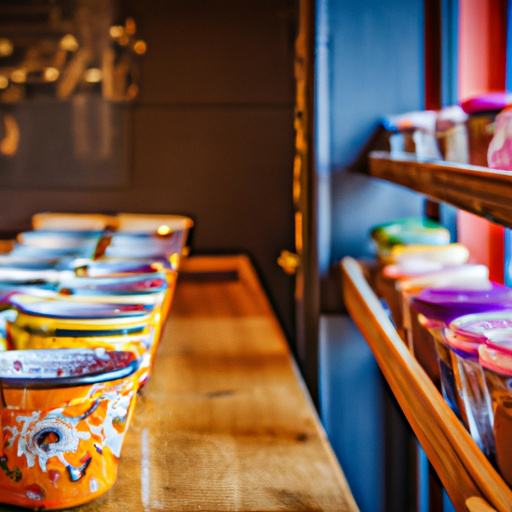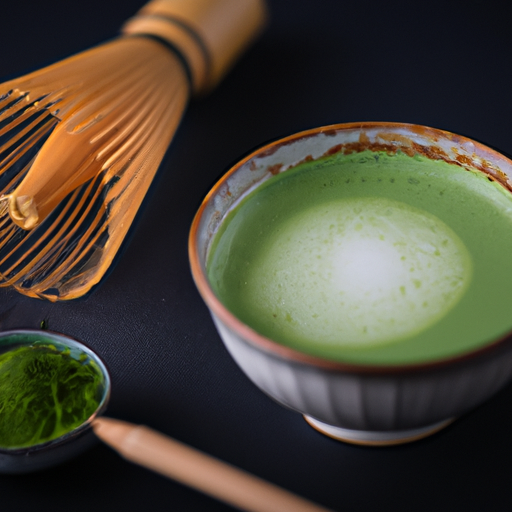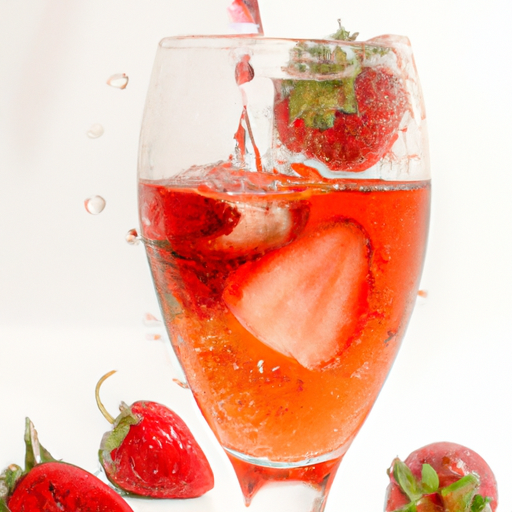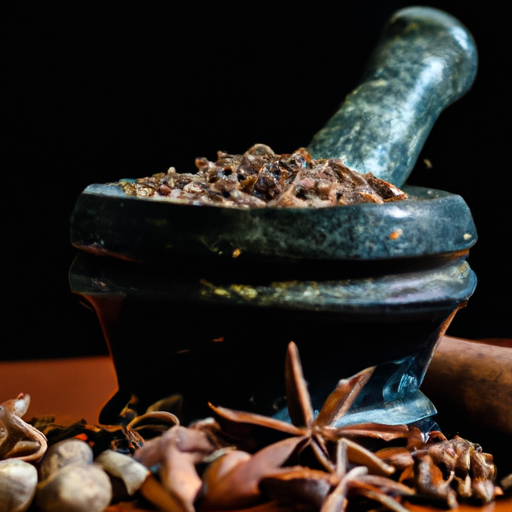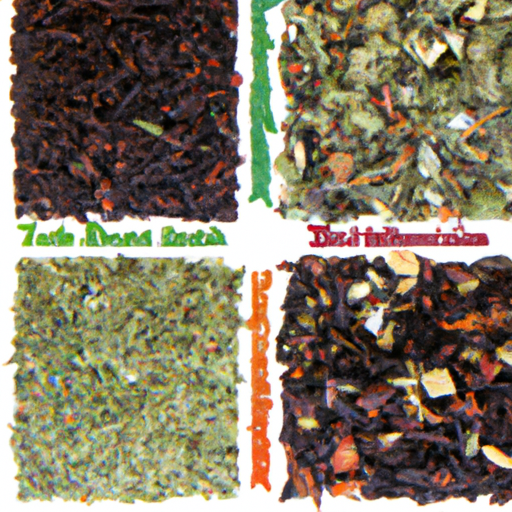Are you prepared to begin an exciting adventure into the realm of specialty tea? Prepare to pamper your senses and uncover the top online tea stores that will elevate your tea-drinking experience.
Brace yourself as we delve into a realm where vibrant flavors, exquisite aromas, and centuries-old traditions converge.
Imagine sipping a cup of perfectly brewed, hand-picked tea that transports you to distant lands and ancient cultures. Whether you’re a tea connoisseur or a curious explorer, these online tea shops will ignite your passion for the beverage that has captivated hearts for centuries.
From the lush tea gardens of India to the serene plantations of China, these shops offer an extensive selection of loose-leaf teas, herbal infusions, and ceremonial matcha. Each sip tells a story, a tale of skilled craftsmanship and dedication to the art of tea.
Get ready to embark on a tea adventure like no other. Join me as we uncover the secrets of the best online tea shops and unlock a world of unparalleled flavors and aromas. Let the journey begin.
Key Takeaways
- Adagio Tea, Harney & Sons, The Tea Spot, and Mountain Rose Herbs are among the best online tea shops to buy specialty tea.
- These tea shops offer a wide variety of loose-leaf teas, including single-estate, flavored, herbal, and wellness teas.
- Some of the tea shops specialize in specific types of tea, such as matcha (Matcha Source, Pique Tea, Naoki Matcha), Indian teas (Vahdam Tea, Teabox, Teatulia), and authentic Chinese teas (Tea Drunk, TeaVivre, Verdant Tea).
- The article highlights the importance of reviews, information about tea origins, and brewing guides when buying tea online.
Top Tea Shops
I’ve found some great options for top tea shops online that specialize in specialty teas! When it comes to buying tea online, it’s essential to consider customer reviews. These reviews can give you valuable insights into the quality and taste of the teas offered by different tea shops.
Look for shops that have positive reviews and a loyal customer base. Another factor to consider is pricing and discounts. While specialty teas tend to be on the pricier side, some tea shops offer discounts or promotions that can help make them more affordable.
It’s worth comparing prices and exploring different options to find the best deals. Overall, finding the best online tea shops for specialty teas requires a bit of research and exploration. But with customer reviews and pricing considerations in mind, you can discover some incredible tea shops that will satisfy your tea cravings and provide you with a delightful tea-drinking experience.
Tea Shop Specialties
With a wide range of tea specialties available, exploring these online tea shops is like embarking on a flavorful journey through the world of tea. Each shop offers unique tea blends that cater to different tastes and preferences. From Adagio Tea’s wide variety of loose-leaf teas to Rishi Tea & Botanicals’ botanical blends, there is something for everyone. What sets these shops apart is their commitment to organic and sustainable tea options. Mountain Rose Herbs focuses on sustainability and quality control, while Vahdam Tea sources directly from plantations with a focus on fair-trade practices. These shops not only provide delicious teas but also promote ethical and environmentally-friendly practices. So whether you’re looking for a classic blend or a unique and innovative tea, these online tea shops have you covered.
Tea Shop Locations
Among the list of 15 tea shops mentioned in the article, Tea Drunk and Verdant Tea are known for specializing in rare and authentic Chinese teas. Tea Drunk offers a unique selection of teas that are sourced directly from China and are known for their exceptional quality. Their focus on rare Chinese teas sets them apart, and they also offer tea education through the Tea Drunk Academy.
Verdant Tea, on the other hand, is a marketplace for small family tea farmers and specializes in a wide variety of Chinese teas. They provide detailed steeping instructions for both Western brewing and gong fu style. When it comes to customer reviews, both Tea Drunk and Verdant Tea have received high praise for their teas and the overall tea shopping experience they provide.
While Tea Drunk may have a slightly higher price range, their dedication to authenticity and education makes it worth it for tea enthusiasts. Verdant Tea, on the other hand, offers a more affordable option without compromising on quality. Ultimately, the choice between the two will depend on personal preferences and budget.
Tea Shop Philosophy
Tea shops like Tea Drunk and Verdant Tea have distinct philosophies that focus on sourcing rare and authentic Chinese teas, providing tea education, and supporting small family tea farmers. These tea shops prioritize sustainability and strive to make a positive impact on the tea industry.
| Tea Shop | Philosophy |
|---|---|
| Tea Drunk | Tea Drunk specializes in rare authentic Chinese teas and offers tea education through the Tea Drunk Academy. Founded by Shunan Teng, this tea shop is passionate about preserving the rich traditions of Chinese tea and sharing their knowledge with others. They believe in the importance of sourcing teas directly from small family tea farmers, ensuring the highest quality and supporting sustainable practices. |
| Verdant Tea | Verdant Tea is a marketplace for small family tea farmers and takes pride in their commitment to sustainability. They work directly with tea farmers, forming personal relationships and ensuring fair prices for their exquisite teas. Their philosophy is rooted in the belief that supporting these farmers is essential for preserving the art of tea cultivation and the unique flavors that result from it. With a focus on Chinese oolong, black, green, white, Puerh, and herbals, Verdant Tea offers a wide range of teas that showcase the diversity and excellence of Chinese tea production. |
These tea shops go beyond just selling tea; they are dedicated to promoting sustainability and supporting the communities that produce these exceptional teas. By choosing to purchase from them, tea enthusiasts can not only enjoy the highest quality teas but also contribute to the preservation of traditional tea-making methods and the livelihoods of small tea farmers.
Tea Shop Recommendations
I highly recommend exploring the tea shops Tea Drunk and Verdant Tea for their exceptional selection of rare and authentic Chinese teas and their commitment to sustainability and supporting small family tea farmers.
When it comes to tea shop reviews, both Tea Drunk and Verdant Tea have received rave reviews for their high-quality teas and knowledgeable staff. Tea Drunk specializes in rare, authentic Chinese teas and offers a tea education through their Tea Drunk Academy. Their dedication to preserving tea culture is evident in every sip.
Verdant Tea, on the other hand, is a marketplace for small family tea farmers, providing a platform for them to showcase their teas.
In terms of pricing, both tea shops offer teas at reasonable and competitive prices, considering the exceptional quality they provide.
So, if you’re looking for a tea shop that not only offers exquisite teas but also supports sustainability and small farmers, Tea Drunk and Verdant Tea should be at the top of your list.
Frequently Asked Questions
What are the different types of tea brewing methods?
There are various tea brewing methods, each with its own benefits. These include steeping techniques like using a teapot, tea infuser, or gaiwan. Loose leaf tea allows for better flavor extraction and a more enjoyable tea experience.
How can I determine the quality of tea before purchasing it online?
Determining tea quality online can be challenging, but there are key factors to consider. Look for detailed product descriptions, customer reviews, and certifications. Just like tasting a ripe fruit, a well-rounded tea will have a balanced flavor, vibrant color, and fragrant aroma.
Are there any specific health benefits associated with different types of tea?
Tea offers various health benefits. Green tea can aid in weight loss due to its metabolism-boosting properties, while herbal teas like peppermint and ginger can support healthy digestion. Incorporating tea into your daily routine can have a positive impact on your overall well-being.
Can you provide tips for storing tea properly to maintain its freshness?
To maintain the freshness of tea, store it in an airtight container away from light, heat, and moisture. Avoid storing it near spices or strong odors. Also, keep track of the tea’s expiration date for optimal flavor.
What are some popular tea accessories and utensils that can enhance the tea brewing experience?
Tea accessories and utensils can greatly enhance the tea brewing experience. Some popular ones include tea infusers, teapots, tea cups, and tea timers. They add convenience, style, and allow for a more personalized and enjoyable tea ritual.
Conclusion
After delving into the world of specialty teas, I must say, it’s been quite a journey. Who knew there were so many incredible online tea shops to explore?
From the ethically-sourced Vahdam Tea to the authentic Chinese teas at Tea Drunk, each shop has its own unique philosophy and range of specialties.
It’s ironic how a simple cup of tea can transport you to faraway places and connect you with passionate tea growers. So go ahead, indulge in the world of specialty tea and discover a whole new level of flavor and aroma.

